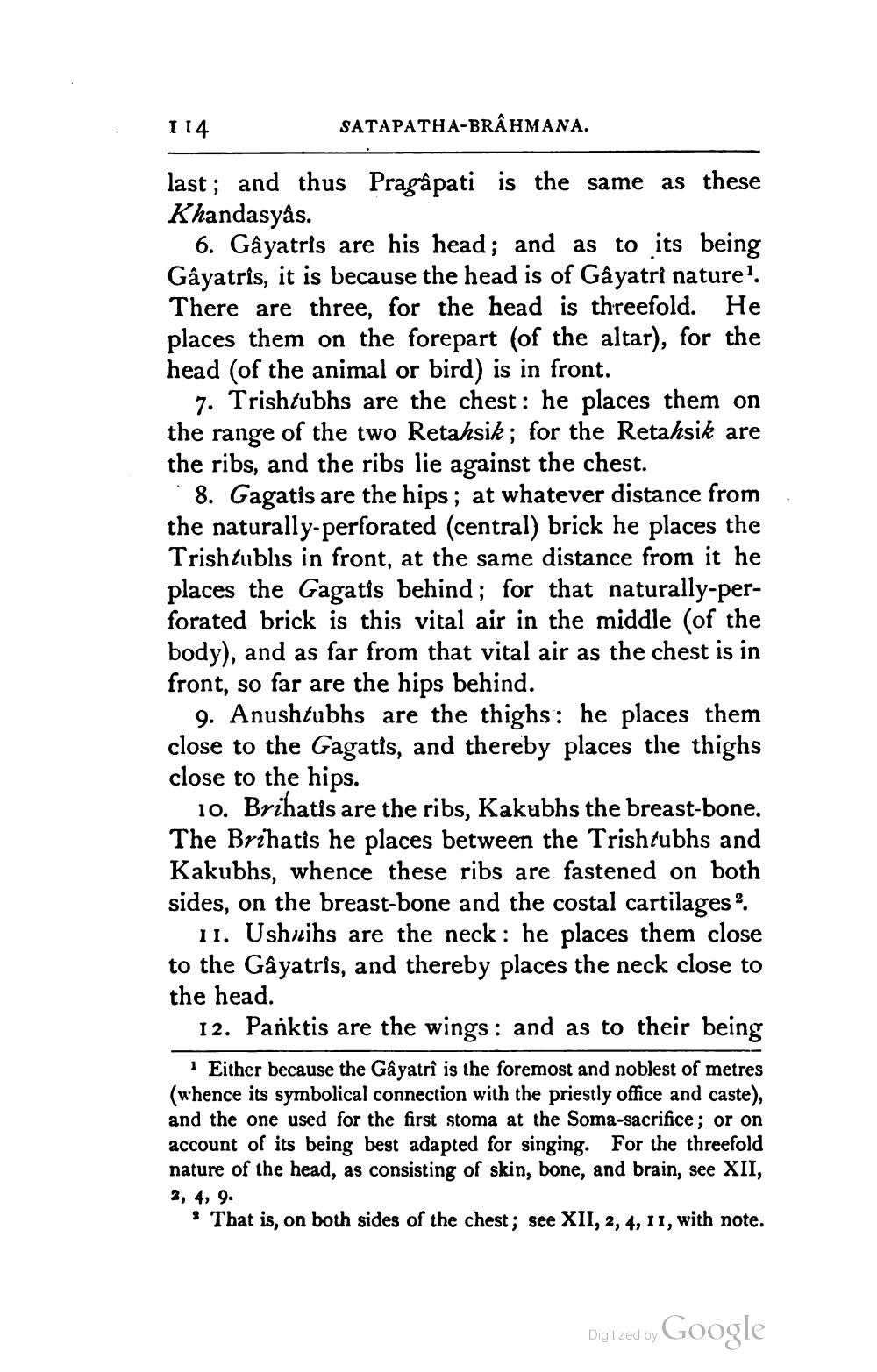________________
114
SATAPATHA-BRÂHMANA.
last; and thus Pragậpati is the same as these Khandasyâs.
6. Gayatris are his head; and as to its being Gayatris, it is because the head is of Gayatri naturel. There are three, for the head is threefold. He places them on the forepart (of the altar), for the head (of the animal or bird) is in front.
7. Trishtubhs are the chest : he places them on the range of the two Retahsik; for the Retahsik are the ribs, and the ribs lie against the chest.
8. Gagatis are the hips; at whatever distance from the naturally-perforated (central) brick he places the Trishtublis in front, at the same distance from it he places the Gagatis behind; for that naturally-perforated brick is this vital air in the middle (of the body), and as far from that vital air as the chest is in front, so far are the hips behind.
9. Anushtubhs are the thighs: he places them close to the Gagatis, and thereby places the thighs close to the hips.
10. Brihatis are the ribs, Kakubhs the breast-bone. The Brihatis he places between the Trishtubhs and Kakubhs, whence these ribs are fastened on both sides, on the breast-bone and the costal cartilages ?
11. Ushrihs are the neck: he places them close to the Gayatris, and thereby places the neck close to the head.
12. Panktis are the wings: and as to their being
1 Either because the Gayatri is the foremost and noblest of metres (whence its symbolical connection with the priestly office and caste), and the one used for the first stoma at the Soma-sacrifice; or on account of its being best adapted for singing. For the threefold nature of the head, as consisting of skin, bone, and brain, see XII, 2, 4, 9.
$ That is, on both sides of the chest; see XII, 2, 4, 11, with note.
Digitized by Google




